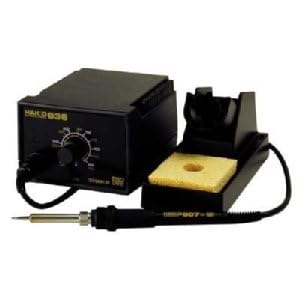 |
| Only Enigma Machine in the World that you can touch |
This week I stopped at the
Cryptologic Museum and got to see a few QRP rigs as well as actually touch a WWII Engima Machine. It was raining while took a short tour. There were several people working on a new PR video for the museum and one of the people who was there to be interviewed gave me a quick talk on the 'Engima', the US counterpart called 'Sigabra' and the Japanese 'Jade' machine.
 |
Large Hi Profile Sign
|
 |
| Engima |
SINCGARS Military Radios
SINCGARS (Single-Channel Ground and Airborne Radio System) is a family of lightweight, very high frequency (VHF) frequency modulated (FM) or frequency hopping (FH) radios for infantry, tactical vehicles, naval and airborne employment. SINCGARS replaces all
AN/PRC-77 manpack and
AN/VRC-12 series vehicular mounted and most other airborne and ground VHF frequency modulated (FM) radios in the Department of Defense.

SINCGARS Tactical Radios. Top unit is SINCGARS ASIP while bottom unit is SINCGARS ICOM, in vehicle mount rack.
SINCGARS and SINCGARS-compatible radios have been a core component of U.S. military tactical communiations since the 1980s. The version table on this page shows many of the models that have been issued to Army, Marine Corp, Navy, and Air Force units but more have been and will be fielded to provide interoperable radios with different configurations. Suffixes are added to existing model numbers or new nomenclature is created when functional changes are made. There is also a large complement of auxiliary equipment for functions such as encryption and frequency hopping code generation, key loading and management, power supplies and batteries, mounting racks, cables, antennas, switching, interop and retrans, and much more that can be found in the SINCGARS manuals.
 |
| Different type of HF portable |
The KY-57 is the man portable ground equipment and is only contains the voice encryption function so it needs to be used with a radio or wire line.
Note that the classical KY-57 uses a digital data stream at 16 k bits per second and so needs what's called a wide band radio channel. This is why military radios have 25 kHz channel spacing whereas commercial plain text radios use a 5 kHz channel spacing. Becasue of this need for bandwidth the VINSON system will not work on H.F. radios, only VHF and UHF wideband radios.
The Frequency hopping aspect of radios like the SINCGARS and Have Quick makes it difficult for an enemy to get a bearing on a transmitter, but does not provide secure voice transmission. That's why these radios either use a KY-57 or KY-58 or have an equivalent function built-in.
The KY-57/58/67 support OTAR, Over The Air Rekeying. This can be done once the KY-57 has a Key Encryption Key (KEK) loaded in variable slot 6. The new dkeys are transmitted in the clear as Black keys and converted into Red keys by the KEK as they are loaded into the slots. Note the KEK can not be sent over the air and needs to be loaded locally.
 |
| Cray Super Computer |
 |
| PRD-1 in Vietnam display |
The PRD-1 is an H.F. receiver designed for direction finding.
It can be mounted on it's special tripod (included in this auction)
or using a special mount that allows leveling of the radio,
on the fender of a jeep like the willys Jeep or M38A1.(check other auctions),
First used in the Korean War, the AN/PRD-1 Direction Finding Set
was the workhorse during the Vietnam War for determining from what
direction enemy radio signals were coming.
It could pick up continuous wave, interrupted wave, frequency-modulated (fm)
and amplitude-modulated (am) signals and, by rotating the antenna
to determine w the maximum pickup was obtained, home in on
enemy radio sources.
R-395/PRD-1 Receiver Covers 100 Kc to 30 Mc with High sensitivity
 |
| Sigabra (US Enigma type machine) Never broken! |
n 1943 , the Americans and British together a Combined Cipher Machine (CCM). The British and American Typex SIGABRA could thus send messages to each other. Although the British Typex does the Americans showed, the Americans refused their machine to the British show. The CCM was used by the British Navy in 1943 . The CCM represents an improvement for both the U.S. and Typex SIGABRA . Typex 22 (BID/08/2) and Typex 23 (BID/08/3) were late models include plug boards for even more security.
It is estimated that by the end of World War II more than 12,000 machines were produced Typex.
The Typex machines remained in use until the seventies. In 1973 the New Zealand government stripped away from the last machine.
 |
| Voice Scrambling Technology |
The name SIGSALY was not an acronym, but a cover name that resembled an acronym—the SIG part was common in Army Signal Corps names (eg,
SIGABA). The prototype was called the "Green Hornet" after the popular radio show
The Green Hornet, because it sounded like a buzzing
hornet— resembling the show's theme tune — to anyone trying to eavesdrop on the conversation.
 |
| Telemetry RX |
 |
| VC Code Key |































